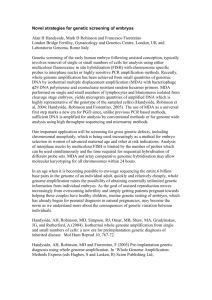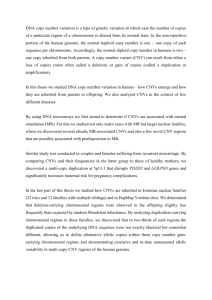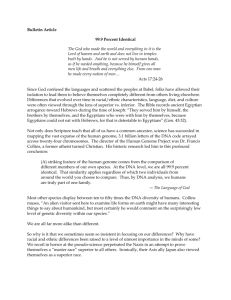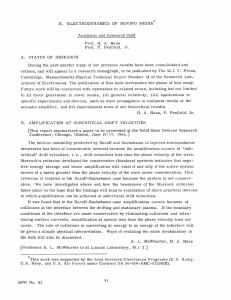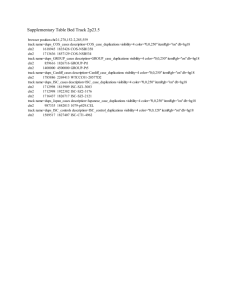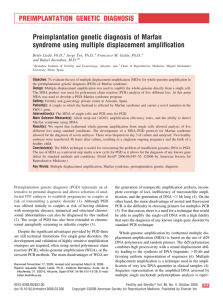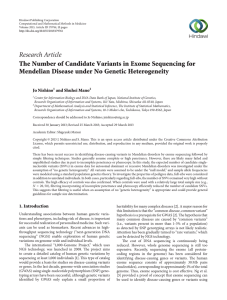Single-Nucleotide and Copy-Number Variations of a Single Human
advertisement
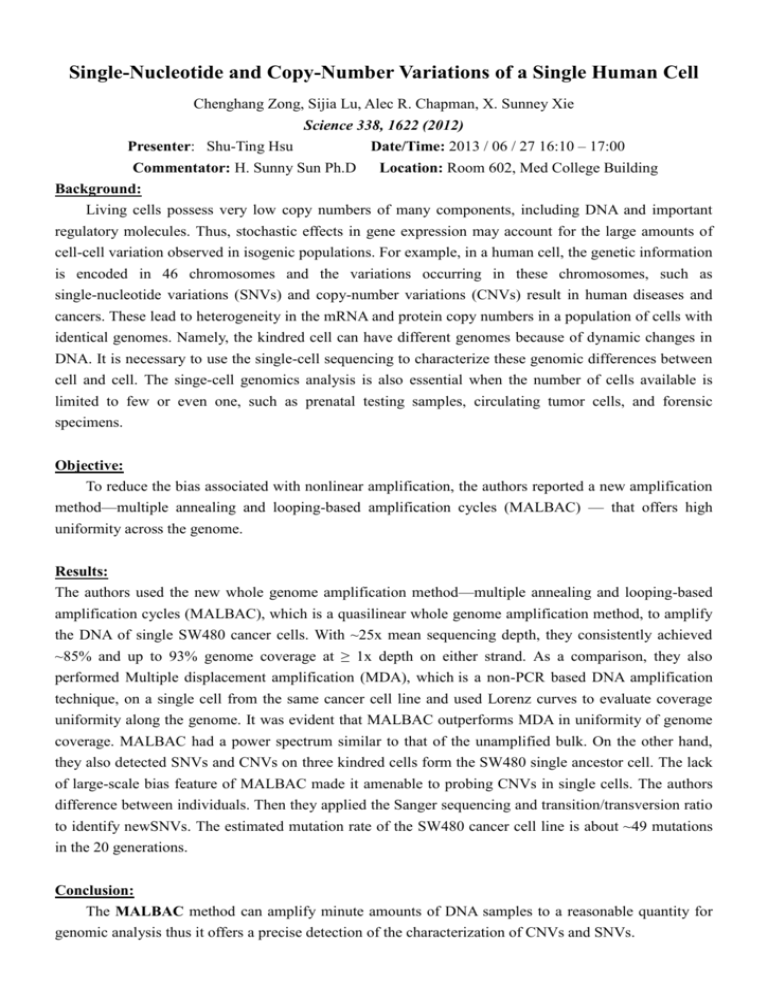
Single-Nucleotide and Copy-Number Variations of a Single Human Cell Chenghang Zong, Sijia Lu, Alec R. Chapman, X. Sunney Xie Science 338, 1622 (2012) Presenter: Shu-Ting Hsu Date/Time: 2013 / 06 / 27 16:10 – 17:00 Commentator: H. Sunny Sun Ph.D Location: Room 602, Med College Building Background: Living cells possess very low copy numbers of many components, including DNA and important regulatory molecules. Thus, stochastic effects in gene expression may account for the large amounts of cell-cell variation observed in isogenic populations. For example, in a human cell, the genetic information is encoded in 46 chromosomes and the variations occurring in these chromosomes, such as single-nucleotide variations (SNVs) and copy-number variations (CNVs) result in human diseases and cancers. These lead to heterogeneity in the mRNA and protein copy numbers in a population of cells with identical genomes. Namely, the kindred cell can have different genomes because of dynamic changes in DNA. It is necessary to use the single-cell sequencing to characterize these genomic differences between cell and cell. The singe-cell genomics analysis is also essential when the number of cells available is limited to few or even one, such as prenatal testing samples, circulating tumor cells, and forensic specimens. Objective: To reduce the bias associated with nonlinear amplification, the authors reported a new amplification method—multiple annealing and looping-based amplification cycles (MALBAC) — that offers high uniformity across the genome. Results: The authors used the new whole genome amplification method—multiple annealing and looping-based amplification cycles (MALBAC), which is a quasilinear whole genome amplification method, to amplify the DNA of single SW480 cancer cells. With ~25x mean sequencing depth, they consistently achieved ~85% and up to 93% genome coverage at ≥ 1x depth on either strand. As a comparison, they also performed Multiple displacement amplification (MDA), which is a non-PCR based DNA amplification technique, on a single cell from the same cancer cell line and used Lorenz curves to evaluate coverage uniformity along the genome. It was evident that MALBAC outperforms MDA in uniformity of genome coverage. MALBAC had a power spectrum similar to that of the unamplified bulk. On the other hand, they also detected SNVs and CNVs on three kindred cells form the SW480 single ancestor cell. The lack of large-scale bias feature of MALBAC made it amenable to probing CNVs in single cells. The authors difference between individuals. Then they applied the Sanger sequencing and transition/transversion ratio to identify newSNVs. The estimated mutation rate of the SW480 cancer cell line is about ~49 mutations in the 20 generations. Conclusion: The MALBAC method can amplify minute amounts of DNA samples to a reasonable quantity for genomic analysis thus it offers a precise detection of the characterization of CNVs and SNVs.




